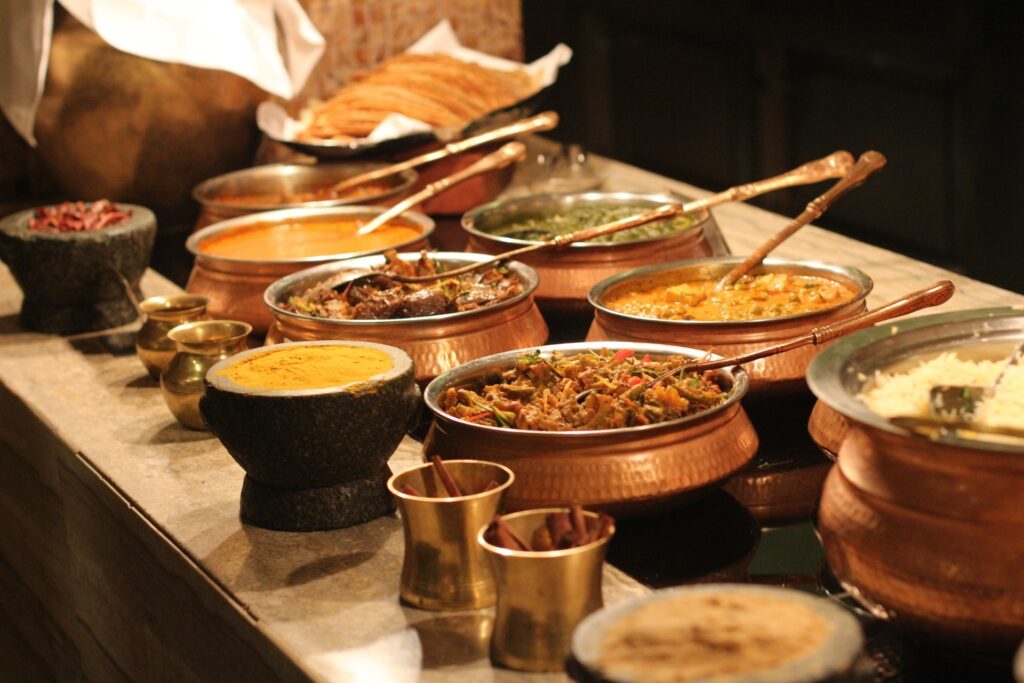In any field, it is simple to accumulate urban-myth type knowledge, and Ayurveda is no exception. There are several myths around Ayurvedic Cooking.
Below mentioned are a few food myths that have been debunked by Ayurveda:
1. Ghee, which is Widely Used in Ayurveda, is Inappropriate
For cooking oils, Ayurveda clearly supports ghee. Fat is classified into two types: good fat (monounsaturated and polyunsaturated fats) and bad fat (trans fats). Ghee, which is commonly used in Ayurveda, is abundant in healthy fatty acids, which have miraculous benefits while not inducing weight gain. Weight loss, a healthy heart, glowing skin, increased energy are some of the benefits.
2. It is Okay to Use Canned or Frozen Foods
Frozen and canned foods are popular, but Ayurveda does not prescribe them. According to Ayurveda, while frozen or canned foods are fast and simple to prepare, they contain preservatives and flavors that are detrimental to health when consumed daily. If you can’t get fresh produce, it may be because it’s out of season, which negates the good seasonal effects on doshas.
These processed foods can often include less desirable ingredients such as preservatives, sugars, and “natural flavors,” all of which you do not want to consume.
They make our bodies feel inactive and raise inertia because they lack nutrition and taste. Foods are best eaten fresh and freshly prepared at home, according to Ayurveda. Organic, whole foods make up the perfect diet.
3. Tea and Coffee are Excellent Refreshments
Caffeine, which is used in tea and coffee, may have negative effects on the human body. While these drinks are deemed relaxing, drinking them in large amounts can increase the system’s imbalance. Caffeine influences each Prakriti (body type/constitution) differently:
Vata Dosha: It increases nausea, panic, and nervousness, as well as jitteriness, shakiness, dizziness, and muscle tremors, as well as bloating, constipation, weak bones, and headaches.
Pitta Dosha: Caffeine can boost blood pressure for up to 2-3 hours after consumption in Pitta Doshas. It often causes irritability, frustration, headaches, indignation, short temper, and shortness of breath. Excessive intake may cause a sore stomach, nausea, vomiting, hyperacidity, heartburn, and gastric ulcers.
Kapha Dosha: It affects the kidneys and bladder. It slows digestion and stimulates urination.
4. You Must Cook All the Time
Of necessity, cooking is good because there is less packaged food and you have power over the resources and ingredients that go into your food. However, healthy eating is a way of life, and you must begin where you are. The journey towards being more mindful of food, even though just by not consuming “low-fat” groceries, is a major improvement. One should not overthink, but seek local growers, cook most days, eat more organic, fast once a week, and avoid packaged or processed foods.
It’s fine not to begin there. Every step is crucial. In restaurants, you can also pick the energetics of your meal. At the very least, offer the body the qualities it deserves (warm, moist, nourishing, easy to digest). At that moment, not forcing yourself to cook can even be a soothing choice. So, you can still live an Ayurvedic food lifestyle without having to prepare all the time.
5. Don’t Waste Food; There are People Starving
This is something that every human is taught as a child. Although I wholeheartedly believe that food should not be wasted, consuming when you are not hungry is not the solution. In fact, when it comes to adapting to their bodies’ needs, children outperform adults. If you have lavished your kid with candy and gifts, all bets are off. However, children will recognize that they are full, and they will not be hungry whether they have constipation (a clog in the digestive system) or have already consumed too much.
As adults, we need to be more mindful of our digestive system too. When we go out to dinner, there should be no shame in not completing a large plate of food, no matter how delicious it is. We must exercise self-control so that we do not overindulge. Limiting distractions when eating will help us become more conscious of our bodies and understand when we are full. Any leftover curry can then be saved for another day or given to the family pets.
6. Ayurveda is All about Indian Spices and Foods
Ayurveda does not necessitate or endorse any specific food or region. It’s a pure wisdom to learn the energetics of food. Every meal has special properties, and you learn to pay attention to how foods feel in your mouth and stomach. Whatever you consume has its own range of energetics. Until you get comfortable sensing the energetics of food—with some education of course—you can apply that to any cuisine.
7. Fat should not be Included in Our Diet
After all, Ayurveda is all about ghee and carbs. It’s difficult to move from the comfort of salad and low-carb living into the ecosystem of “consuming all foods.” As per Ayurveda, not all fats are bad; in fact, some can help with weight loss.
We must know that our brain is largely composed of fat. The kidney is covered in fat, fat wraps around abdominal organs, and fat lubricates joints. Fat is necessary for the health of the skin, joints, gut, nervous system, and mind.
Thankfully, there has been much progress in disproving this myth, and we are becoming more aware of the benefits of good fat. 10% of our diet should be fat (remember, we don’t have to get the 10% from oils because vegetables, proteins, and grains do contain varying amounts of fat).
However, be aware that the usage of certain types of fat can quickly boost blood fat levels and increase the likelihood of cardiac diseases, stroke, and other health issues. Have a small amount of good fat in your diet regularly.
Ghee, nuts, seeds, dairy (except butter), rice, and so on are all good sources of fat. However, remember to use these ingredients in moderation and to minimize fried foods and visible fat in proteins.
8. There are Different Diets in Ayurveda
Ayurveda not only tells us what to consume, but also when to eat, how to eat, and how much to eat.
We are always evolving, and our nutritional strategy should evolve with us. Food requirements vary in the winter versus the summer, in the morning versus the evening, at periods of high demand versus ease, at different activity levels, and during different moon phases or hormone cycles.
Ayurveda teaches you how to listen to what the body is asking for in real-time. This is accomplished by discovering appetite habits, digestive signs, bowel movements, and tongue observations. This will seem complicated, but it is not! If you’ve figured out how to decipher the secrets of the gut, you’ll be able to help determine what diet will be a good match at the time. This becomes less of an analytical process and more of an intuitive one with time.
Ayurveda is more concerned about the “diet for today” than it is with a set of rules like Paleo or Veganism. So, don’t buy the old Ayurvedic fallacy of eating in a certain way.
9. Traditional Indian Cuisine is TOO OLD for Today’s Lifestyle
Traditional Indian foods have been prepared for several years, and preparation styles differ from region to region. Because of including functional foods such as body-healing ingredients, vitamins, dietary fiber, and probiotics, Indian traditional foods are often known as functional foods.
These functional foods aid in weight loss, blood sugar control, and support the immune system. Production techniques such as sprouting, malting, and fermentation improve the functional properties of foods much more.
These were few common misconceptions regarding Ayurvedic Cooking. Feel free to share your opinions in the comments. Thanks for reading…




An intriguing discussion
is worth comment. I do
believe that you should publish more about
this subject,
it may not be a taboo subject but generally people
do not discuss
such issues. To the next!
All the best!!